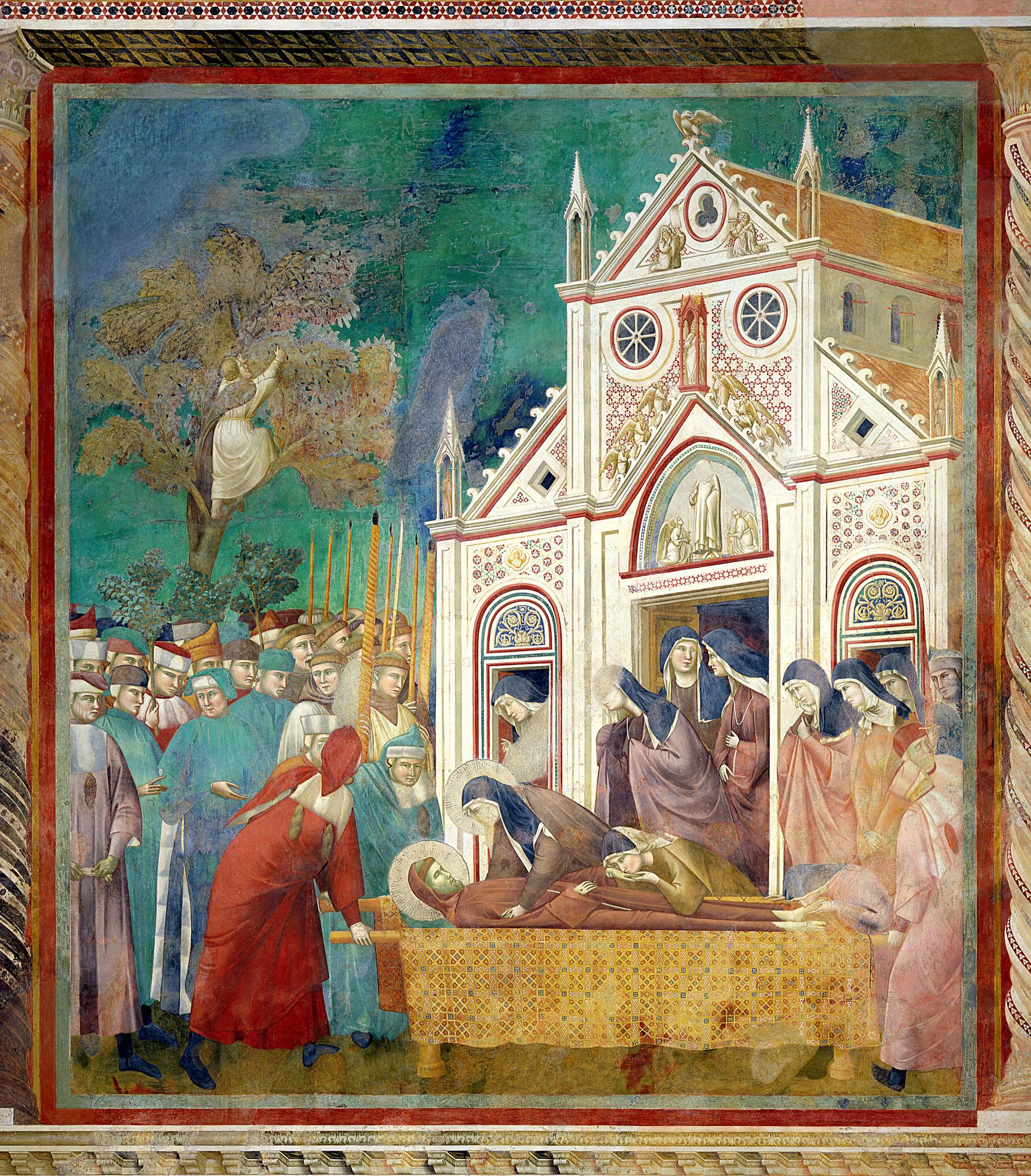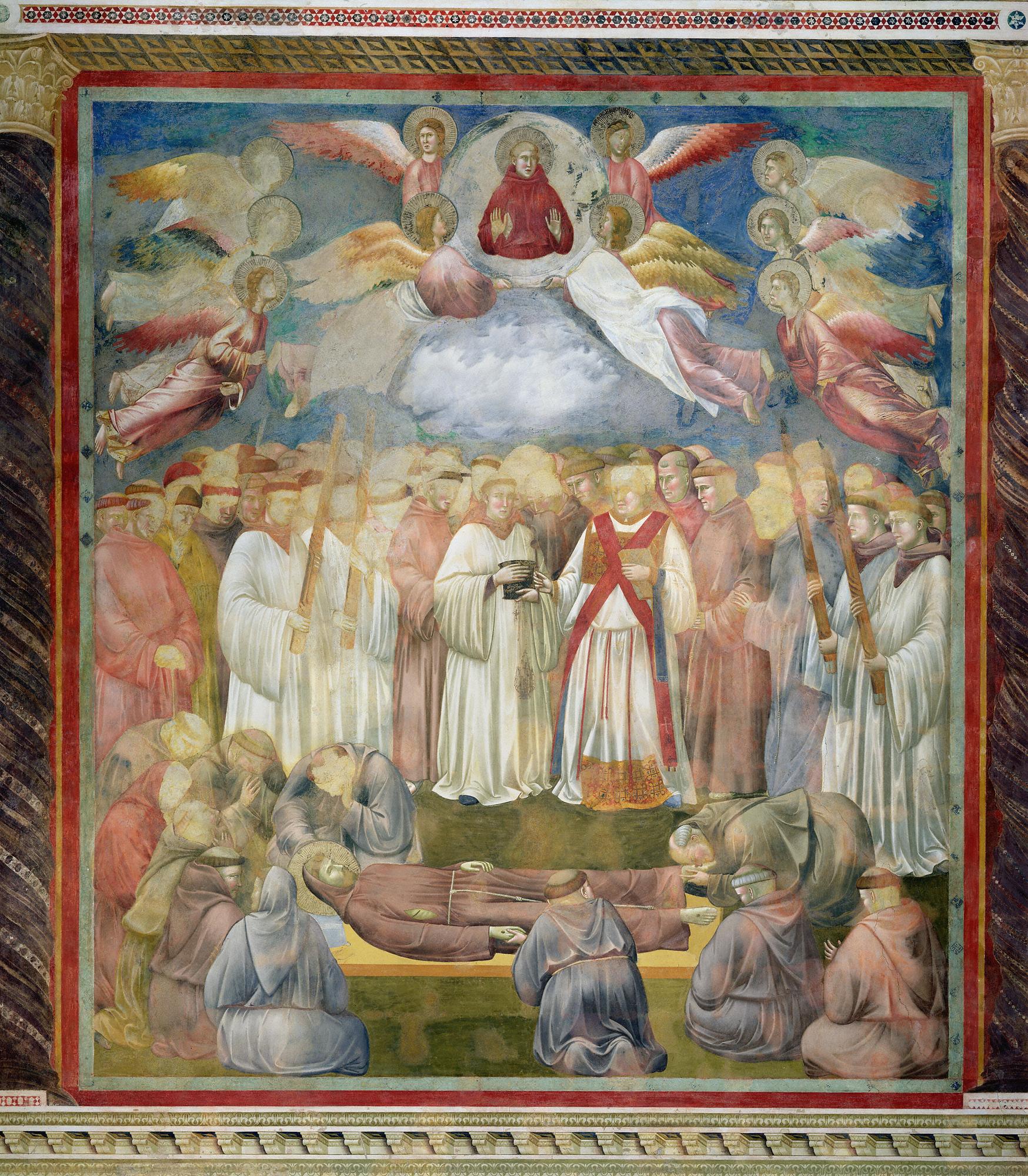In the thirteenth century, additional scenes and notable alterations were made to the iconography of Jesus’ Passion narrative, which had hitherto been fairly standard in the medieval world; stylistic variations had been the greatest discrepancy between various cycles. Adjustments to The Betrayal, The Trial, The Mocking, and The Way to Calvary and the inclusion of the nascent images, The Stripping of Clothes and The Ascent Up the Cross, were added to artworks associated with the newly-established Franciscan Order around 1240. These alterations became commonplace in frescoes, altarpieces, and historiated crosses commissioned for Franciscan and Clarisan houses and illustrated Christ as emblematic of the core Franciscan values of humility, poverty, and a willingness to die for the faith. For instance, in these scenes, Jesus was depicted as weak and susceptible in settings where he had previously been shown to exhibit a stoic response to the events of his Passion. Such subtle characterizations became standard in all images and continued to promote the fundamental message of the redemption that Jesus gained through his death and resurrection, yet they altered Jesus’ response, emphasizing his frail human nature.
This emotive portrayal paralleled burgeoning Franciscan thought in duecento Italy and influenced contemporaneous artworks. Specifically, scenes in the Upper Church of the Basilica di San Francesco in Assisi, attributed to Giotto and his workshop, narrate The Legend of St. Francis. Their proximal location – the second bay in the southern nave wall is one example – and compositional resemblance to scenes from Jesus’ life link them inextricably to the events and sentiments of the New Testament narrative, but most specifically, Jesus’ Passion. The Stigmatization of St. Francis and St. Clare Embracing the Body of St. Francis at the Convent of San Damiano are two poignant examples, recalling the Crucifixion and the Virgin Mary’s lamentation.
Further Reading: Anne Derbes, Picturing the Passion in Late Medieval Italy, Narrative Painting, Franciscan Ideologies, and the Levant (New York, NY: Cambridge University Press, 1996).
Giotto (attributed to), The Stigmatization, Upper Church, Basilica di San Francesco, Assisi, 1295-99, fresco.
Giotto (attributed to), St. Clare Embracing the Body of St. Francis at the Convent of San Damiano, Upper Church, Basilica di San Francesco, Assisi, 1295-99, fresco.
Master of Saint Francis, Deposition from the Cross, 13th century.
Upper Church, Basilica di San Francesco, Assisi, 1228-1253.
Southern wall, 2nd bay, nave, Upper Church, Basilica di San Francesco, Assisi, 1228-1253/1295-99, fresco.
Master of Saint Francis of Assisi, Bi-faced Processional Cross, 1275-1280, tempera on panel.
Giotto (attributed to), The Death of St. Francis, Upper Church, Basilica di San Francesco, Assisi, 1295-99, fresco.





